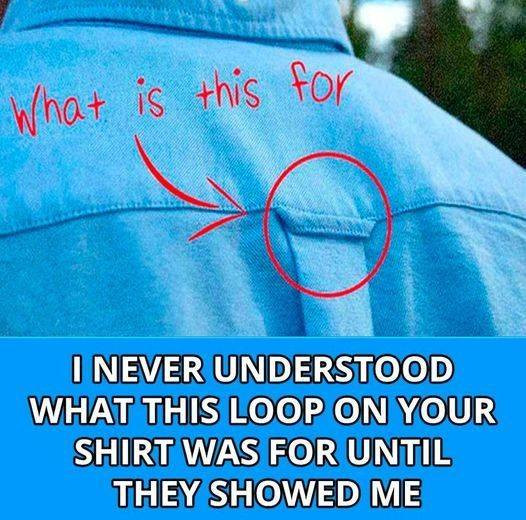ADVERTISEMENT
Certainly! Here’s an informative and engaging article titled:
Why Do Button-Down Shirts Have Loops on the Back? The Surprising History Behind That Tiny Detail
Ever noticed that small fabric loop on the back of a button-down shirt — right where the yoke meets the pleat? If you’ve ever wondered what it’s for, you’re not alone. This little loop has puzzled plenty of people, and while it might seem decorative, it actually has a fascinating history rooted in function, fashion, and even flirtation.
👔 What Is the Back Loop on a Shirt?
This tiny loop of fabric, usually found on the upper back of a men’s button-down shirt, is commonly referred to as a locker loop. It’s sewn into the yoke (the part of the shirt just below the collar) and has been a standard feature on many casual and dress shirts for decades.
🧥 The Original Purpose: Locker Room Convenience
The loop was originally added for practical reasons. In the 1960s, particularly on Ivy League college campuses in the U.S., men needed a way to hang their shirts in gym lockers without wrinkling them. Since most gym lockers didn’t have hangers, the loop allowed students to hook their shirts on a peg — keeping them neat and off the locker floor.
Hence, the name “locker loop.”
🎓 Ivy League Origins and Preppy Culture
The locker loop is closely associated with the Ivy League and preppy fashion, popularized by brands like GANT and Brooks Brothers. GANT, in fact, is credited with bringing the feature to the mainstream in the mid-20th century.
It quickly became more than just functional — it became fashionable. A button-down with a locker loop signaled you were part of the in-crowd, especially among college students.
ADVERTISEMENT
